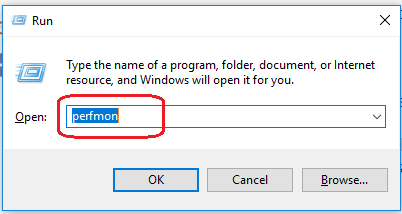

The following list describes how much RAM the various Windows versions and editions support (as of May 2010): Windows version Any virtual memory page (32-bit address) can be associated with any physical RAM page (36-bit address).
#WINDOWS 10 VIRTUAL MEMORY MONITOR CODE#
The translation between the 32-bit virtual memory address that is used by the code that is running in a process and the 36-bit RAM address is handled automatically and transparently by the computer hardware according to translation tables that are maintained by the operating system. PAE does not change the size of the virtual address space (which remains at 4 GB), but just the volume of actual RAM that can be addressed by the processor. Physical Address Extension (PAE) is the feature of the Intel 32-bit architecture that expands the physical memory (RAM) address to 36 bits. The operating system assigns RAM page frames only to those virtual memory pages that are being used.

Typically, applications (for example, Notepad, Word, Excel, and Acrobat Reader) use only a fraction of the 2 GB of private address space. In the default Windows configuration, 2 gigabytes (GB) of this virtual address space are designated for the private use of each process, and the other 2 GB is shared between all processes and the operating system. Processes and address spacesĪll processes (for example, application executables) that are running under 32-bit versions of Windows are assigned virtual memory addresses (a virtual address space), ranging from 0 to 4,294,967,295 (2*32-1 = 4 GB), regardless of how much RAM is installed on the computer. Virtual memory is always being used, even when the memory that is required by all running processes does not exceed the volume of RAM that is installed on the system. Only core parts of the operating system kernel bypass this address translation and use real memory addresses directly. Virtual memory addresses are automatically translated to real (RAM) addresses by the hardware. In modern operating systems such as Windows, applications and many system processes always reference memory by using virtual memory addresses. This article contains basic information about the virtual memory implementation in 32-bit versions of Windows.
#WINDOWS 10 VIRTUAL MEMORY MONITOR WINDOWS 7#
Applies to: Windows 7 Service Pack 1, Windows Server 2012 R2 Original KB number: 2160852 Summary


 0 kommentar(er)
0 kommentar(er)
